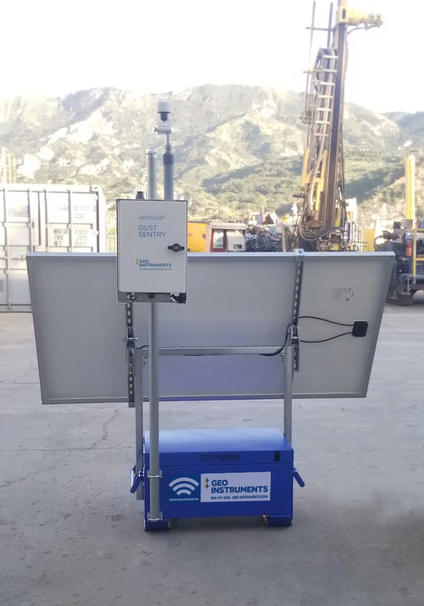Automated dust monitoring is a cost-effective way to verify dust mitigation measures and maintain good community relations.

Common uses
Process
Dust from demolition, construction, and cleanup activities can significantly impact local air quality, posing a health hazard and a nuisance. For that reason, dust mitigation measures are required at most construction sites, and real-time dust monitoring may be required to verify that mitigation measures are effective.
The EPA’s National Ambient Air Quality Standard sets limits for concentrations of airborne pollutants that can harm health and cause environmental damage.
Construction dust falls under the standards for particulate matter:
- PM10 for particles with diameters 10 microns and smaller – typically soil. The PM10 limit is 150 µg/m3 averaged over 24 hours.
- PM2.5 for particles with diameters 2.5 microns and smaller – typically exhaust from heavy machinery. The PM2.5 limit is 35 µg/m3 averaged over 24 hours.
Local codes, agencies, and communities set specific regulations, but typically dust monitors should be placed in path of the migrating dust, typically at the project fenceline and at critical locations outside the fenceline, such as hospitals and schools.
Monitoring is usually continuous during construction hours as a minimum to document 24-hour average. Ideally, windspeed and direction should be monitored as well as dust.
Monitoring should provide alerts so that prompt action can be taken if limits are exceeded. It should also be used to evaluate dust mitigation measures to improve practices or reduce costs. You can avoid including fugitive dust from other sites in the evaluation by placing a monitor upwind of the fenceline.
Monitoring reports can be stored for easy retrieval in case of complaints.
Advantages
- Continuous sampling: Automated monitoring provides continuous sampling of air quality, typically at multiple locations around the construction site.
- Minimal maintenance: Each monitor operates autonomously, protected by a weatherproof enclosure and powered by AC mains or solar-charged batteries.
- Timely alerts: Automated systems can send alerts to on-site project managers for prompt action.
- Web access: Air quality status is displayed on a project website and reports are generated at required intervals. Reports and data are archived automatically for easy retrieval.
- Cost-effective: Multiple dust monitoring systems cost less and provide better coverage than a roving technician with a hand-held dust monitor. Combination monitoring: Our automated monitoring platform can present data from dust, noise, vibration, and geotechnical measurements all on the same project website.